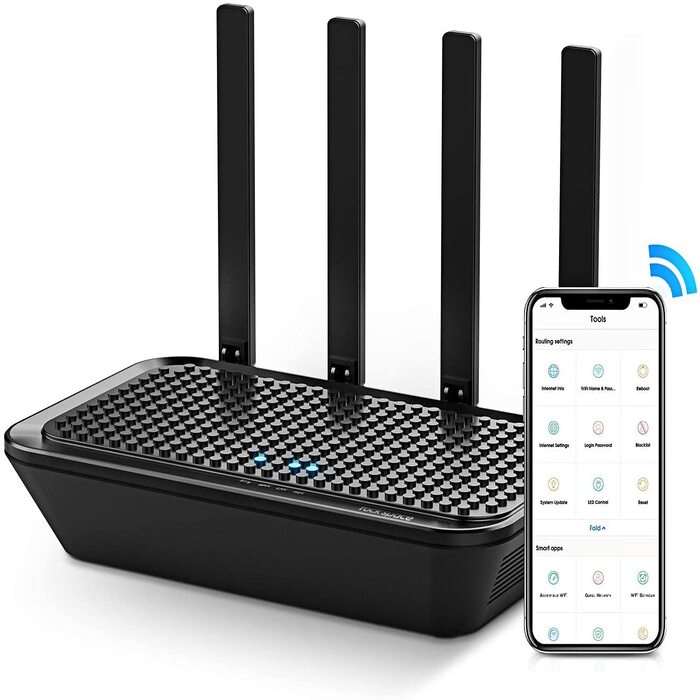Updating your router is crucial for enhancing your internet performance and security. Many users overlook this important part of their home network management. However, it can be the key to ensuring a smooth internet experience. Whether you’re streaming content, gaming, or simply browsing, a well-maintained router can make a big difference. This guide will take you through the essential steps to update your router effectively. Follow these instructions closely for the best results.
Understanding the Importance of Router Updates
Why Updates Matter
Router updates are significant for various reasons. First, they enhance security by patching vulnerabilities. Cyber threats are constantly evolving, and an outdated router can become an easy target. Furthermore, updates often provide performance improvements. These enhancements can lead to faster internet speeds and better reliability. Lastly, manufacturers publish updates to improve compatibility with new devices. As more devices connect to your network, an updated router will handle the traffic more efficiently.
Additionally, updates can introduce new features that improve functionality. For instance, some updates enable enhanced parental controls or Quality of Service (QoS) settings. QoS can prioritize bandwidth for specific devices or applications. This means your video calls won’t drop during a family movie night. Therefore, neglecting to update your router can mean missing out on these useful enhancements.
Timing for Updates
Knowing when to update your router is essential for maintaining performance. Typically, manufacturers release firmware updates periodically. Check your router’s manufacturer site for the latest information. In general, it’s good practice to check for updates every few months. You might also receive notifications through the router’s administrative interface. These notifications can alert you to essential updates.
It’s particularly important to update after experiencing connectivity issues. If you notice slower speeds or frequent disconnections, an update could resolve these problems. However, before proceeding, backup your router settings. This precaution ensures you can restore your previous settings if anything goes wrong.

Preparing for the Update
Backing Up Your Settings
Before starting the update, it’s prudent to back up your current router settings. This step serves two essential purposes. First, it allows you to restore your router to its previous state if issues arise. This can save you considerable time and frustration. Therefore, take a few minutes to navigate to your router’s administrative interface. Look for the backup options, which may be under “Advanced” or “Administration” tabs.
Once you locate the backup option, follow the prompts to create a backup file. Save this file onto your computer or external storage for easy access. If you need to perform a full factory reset after the update, this step will be invaluable. It will allow you to reconfigure your router without starting from scratch.
Checking Router Compatibility
Next, ensure your router is compatible with the latest firmware version. Visit the manufacturer’s website for detailed information. They often provide compatibility charts or lists of supported models. If your router is too old, it may not support new updates. In such cases, you might consider upgrading to a newer model that meets modern standards.
Furthermore, you might discover specific requirements for certain updates. Some may necessitate other software or firmware versions to be installed first. Avoid skipping these steps, as they can result in incomplete updates or even network instability. By confirming compatibility first, you avoid unnecessary complications down the line.
Finding the Latest Firmware
Accessing the Manufacturer’s Website
Once you’re all set, the next step is to locate the latest firmware. Start by visiting the manufacturer’s official website. Look for sections dedicated to “Support” or “Downloads.” This area usually contains links to firmware updates, documentation, and troubleshooting tips. Use your router’s model number to search for its specific firmware update.
Moreover, some websites allow you to enter your router’s serial number for quicker access to resources. Be cautious about downloading firmware from unofficial sources. Third-party sites may offer updates that could harm your device or offer incorrect versions. Therefore, double-check that any downloads come directly from the manufacturer.
Downloading the Firmware
After locating the appropriate firmware version, download it onto your computer. The file will typically be in a compressed format, like .zip or .bin. Ensure you save it in an easily accessible location. This way, you won’t waste time searching when you’re ready to upload it to your router.
Additionally, read any available release notes. These documents often provide information about new features and fixes. Understanding what has changed can help you better utilize the firmware. It also prepares you for possible adjustments you may need to make post-update.

Performing the Update
Accessing the Router’s Administrative Interface
Now it’s time to update the firmware. Start by accessing your router’s administrative interface. Most routers use web-based interfaces that are accessible via a browser. Enter your router’s IP address in the address bar. Common IP addresses include 192.168.1.1 or 192.168.0.1, but check your router’s manual for specifics.
Once you reach the login page, enter your administrator credentials. If you have not changed them, the default username and password can often be found on the manufacturer’s site. If you’ve forgotten your credentials, you may need to reset the router to factory settings. Therefore, always record this information before making any changes.
Uploading the Firmware
After successfully logging in, locate the firmware update section. This area is usually found under “Administration,” “Maintenance,” or “Firmware Update.” Look for a button labeled “Choose File” or “Browse.” Click this button to find the firmware file you downloaded earlier.
Once selected, click on the “Update” or “Upload” button to begin the installation process. Your router will likely restart several times during the update. Be patient, as interrupting this process could render your router unusable. After completion, you should receive a notification confirming the update’s success.
Post-Update Procedures
Testing the Connection
After the update finishes, it’s essential to test your internet connection. First, reconnect your devices to the network. Verify that they can access the internet without issues. If you experience any problems, refer to the backup settings you made beforehand to restore any configurations.
Additionally, consider running a speed test using online tools. This test will help you gauge any improvements in your internet speed. If results are similar or worse than before, troubleshoot by checking your settings or consulting online resources.
Optional Settings Adjustments
Lastly, take the time to review your router settings after the update. Some new firmware versions can reset certain configurations. Consequently, you might need to re-enable any previous settings, like QoS or parental controls. Checking these options ensures you maximize the benefits of the update.
Moreover, some updates introduce new features worth exploring. Familiarize yourself with these enhancements to make the most out of your router. Spend some time navigating the interface to understand how these features work. This step can be beneficial for the overall performance of your network.

Conclusion
In summary, updating your router is not only important but also relatively straightforward. Taking the time to complete this vital task can greatly enhance your internet experience. By following this comprehensive guide, you can ensure that your router is running the latest firmware. Therefore, you’ll not only enjoy improved performance but also increased security.
Moreover, regularly checking for updates can stave off any compatibility issues. By being proactive, you can enjoy a hassle-free internet experience. Remember to back up your settings and find the right firmware version before proceeding. Following these steps will safeguard your network and devices from potential vulnerabilities.
Ultimately, maintaining your router is an ongoing process. Incorporate regular updates into your tech routine. With a little effort, you’ll ensure your home network remains secure and efficient. Doing so will provide peace of mind as you browse, stream, and connect devices seamlessly. It’s a small investment of time that pays off with a smooth, reliable internet experience for everyone in your household.

Leave a Reply